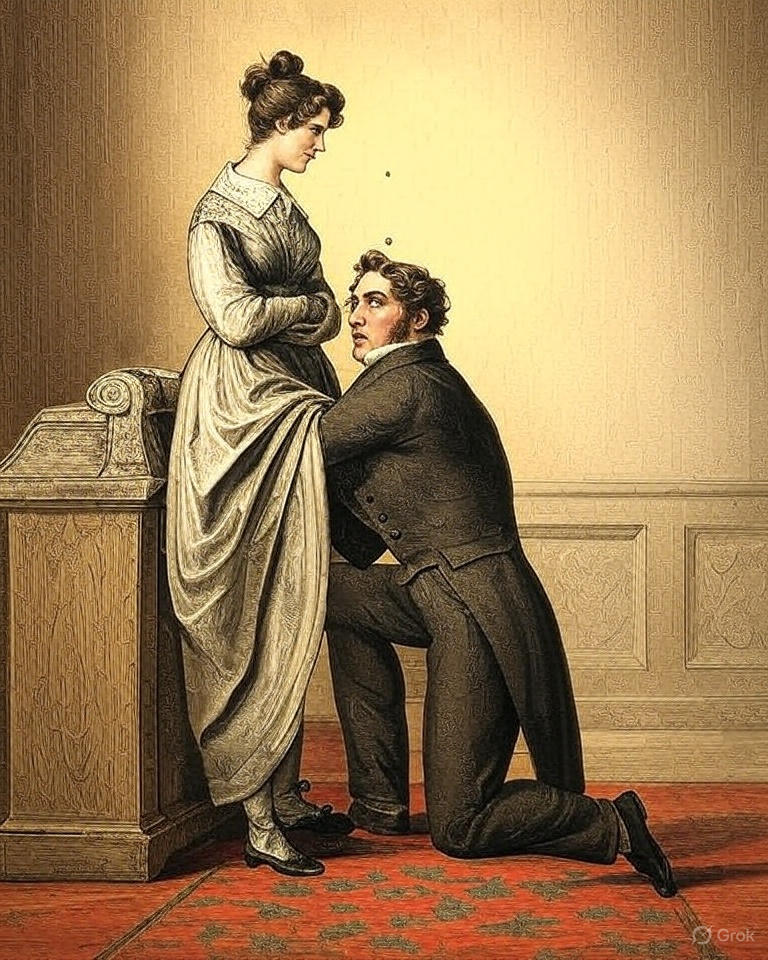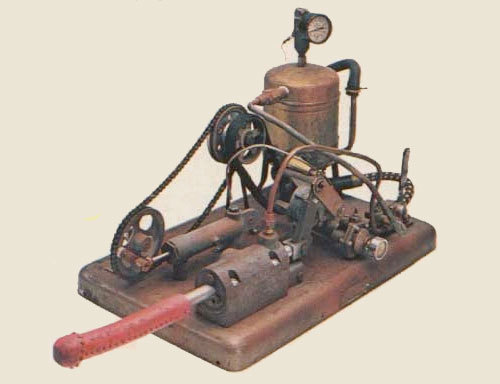⏲️ Estimated reading time: 7 min
How “Hysteria” Led to the Invention of the Vibrator – The Real Story. Discover the fascinating and controversial history of how the medical diagnosis of “hysteria” in the 18th and 19th centuries indirectly led to the invention of the vibrator. Learn what’s fact, what’s myth, and how history shaped modern perceptions.
How “Hysteria” Led to the Invention of the Vibrator – The Real Story
The connection between the Victorian-era diagnosis of “female hysteria” and the invention of the vibrator is one of those stories that seems almost too strange to be true. Yes, the tale has a kernel of historical truth, but it’s often told in an oversimplified and “spicy” way that exaggerates certain aspects while ignoring the full context.
Let’s break down the actual history, based on medical documents, patent records, and historical studies, to see what really happened.

📜 The Origins of “Hysteria” and Its Treatments
In the 18th and 19th centuries, hysteria was a common medical diagnosis, especially for women. It was believed to be caused by a “wandering uterus” or an imbalance in a woman’s reproductive system a concept that originated in ancient Greece and persisted for centuries.
Doctors at the time associated hysteria with symptoms such as:
- Sudden changes in mood or irritability
- Anxiety and depression
- Fatigue and insomnia
- Loss of sexual desire or, paradoxically, “excessive sexual excitement”
- Nervousness, fainting, or muscle spasms
Today, clinicians recognize many of these symptoms as anxiety disorders, depression, hormonal imbalances, sexual dysfunction, or other psychological and physical conditions. In that era, however, doctors lacked the tools to distinguish them, so they grouped the complaints under the broad label “hysteria.”
🩺 Pelvic Massage and “Intense Paroxysm”
By the mid-to-late 19th century, some medical texts began recommending pelvic massage as a treatment for hysteria. In modern terms, this meant manually stimulating the pelvic area until the patient experienced what we now recognize as an orgasm.
In the language of the time, this was called inducing a “Intense paroxysm” a moment of intense release that supposedly relieved the patient’s symptoms, leaving her calmer and more relaxed.
Importantly:
- This practice was regarded as a medical procedure, not a sexual act.
- Doctors and midwives performing the treatment often did so without discussing it in sexual terms.
- In some historical accounts, demand for this procedure was so high that doctors found it physically exhausting, as sessions could last a long time.
⚙️ The Birth of the Vibrator
The strain of repeatedly performing pelvic massage combined with the growing interest in mechanized medicine led to the development of devices to assist doctors.
- The first recorded steam-powered vibrator is credited to Dr. George Taylor in the 1860s.
- The first patented electric vibrator appeared between 1880–1883, credited to Dr. Joseph Mortimer Granville.
- These early devices were large, heavy, and strictly intended for medical use in clinics.
At first, the vibrator was marketed as a time-saving medical tool. Over time, smaller, portable versions became available to wealthy households. These were advertised as “health and relaxation devices” never openly linked to sexual pleasure in public marketing.

Image Source: The History Blog
🎭 Separating Fact from Myth
The story is compelling, but popular retellings especially in movies, blogs, and documentaries add drama or comedy that historians cannot verify.
The story is fascinating, but many popular versions especially in movies, blogs, and documentaries add dramatic or comedic flourishes the historical record doesn’t support.
Although the story fascinates, popular retellings especially in movies, blogs, and documentaries often add drama or comedy that the historical record does not support.
Fascinating as it is, the story often prompts retellers especially in movies, blogs, and documentaries to add dramatic or comedic touches the historical record doesn’t support.
The story captivates, yet many versions particularly in movies, blogs, and documentaries layer on drama or comedy without support in the historical record.
✅ True:
- During the 18th and 19th centuries, doctors widely accepted ‘hysteria’ as a diagnosis, prescribed pelvic massage as treatment, and built early vibrators to make the procedure faster and less physically taxing.
⚠️ Partially True / Exaggerated:
- The image of overworked Victorian doctors with “aching hands” is more modern satire than historical fact.
- Not every wealthy woman had a vibrator in her home such devices were expensive, rare, and considered strictly medical.
- The medical community at the time did not frame the treatment as sexual pleasure, even though the physiological response was identical to an orgasm.
📚 The Social and Cultural Impact
The connection between hysteria and the invention of the vibrator says a lot about how society viewed women’s health in the past:
- Medical Misunderstanding: Women’s mental and physical health issues were often dismissed as emotional instability or sexual dysfunction.
- Silence Around Sexuality: The medical community avoided acknowledging sexual pleasure, framing even orgasm-inducing treatments in purely clinical terms.
- Technological Shift: The vibrator’s invention is part of a broader history of medical mechanization in the 19th century, alongside devices for electrotherapy, massage, and respiratory treatment.
🕰️ From Medical Tool to Cultural Icon
In the 20th century, vibrators slowly transitioned from medical tools to widely recognized sexual wellness products. This transformation happened gradually:
- 1920s–1950s: Vibrators appeared in mail-order catalogs, often disguised as “massagers” or “personal health devices.”
- 1960s–1970s: The sexual revolution and feminist movements began reclaiming vibrators as tools for sexual empowerment.
- Today: Vibrators are openly marketed for sexual pleasure, with countless designs and technological innovations.
Ironically, what started as a “clinical treatment” for an outdated diagnosis became one of the most common and openly discussed sexual wellness products in the world.
🧐 Why the Story Still Matters
This historical episode isn’t just a quirky piece of trivia it reveals how medical practices evolve, how gender shapes healthcare, and how technology often develops in unexpected ways.
It also serves as a reminder that:
- Medical authority changes over time. What is considered “scientific” in one era may be dismissed in another.
- Sexual health should be discussed openly. Suppression of sexual knowledge led to decades of misunderstanding and stigma.
- Innovation can arise from unlikely origins. Even a flawed medical theory can lead to tools that find new, positive uses.
🔍 Final Thoughts
The hysteria–vibrator link shows how history blends fact and myth. Popular retellings add a playful twist. The truth is just as intriguing. It reflects Victorian medicine, gender norms, and early sexual technology.
Hysteria’s tie to the vibrator mixes fact with myth. Many versions add a playful twist. The real story is equally compelling. It mirrors Victorian medicine, gender roles, and the rise of sexual technology.
The link between hysteria and the vibrator blends fact and myth. Popular tellings add a playful twist. The reality intrigues just as much. It reveals Victorian medicine, gender norms, and early sexual tech.
Summary
Reality is more nuanced than the myth. Initially, doctors accepted “hysteria” as a diagnosis, albeit a flawed one. They also prescribed pelvic massage as therapy. Subsequently, inventors developed early vibrators to save doctors time. In time, the device came to symbolize sexual liberation.
Reality is more nuanced than the myth. First, doctors treated “hysteria” as a real though flawed diagnosis. Next, they prescribed pelvic massage as therapy. Then inventors built early vibrators to ease physicians’ workloads. Eventually, the device became a symbol of sexual liberation.
Reality is more nuanced than the myth. Doctors labeled “hysteria” a real though flawed diagnosis. Moreover, they prescribed pelvic massage as treatment. Later, inventors created early vibrators to lighten physicians’ workload. Eventually, the device symbolized sexual liberation.
🔔 For more tutorials like this, consider subscribing to our blog.
📩 Do you have questions or suggestions? Leave a comment or contact us!
🏷️ Tags: hysteria history, vibrator invention, Victorian medicine, female sexuality, medical myths, historical health treatments, women’s health, sexual wellness history, Joseph Mortimer Granville, George Taylor
📢 Hashtags: #HysteriaHistory, #VibratorInvention, #VictorianMedicine, #WomensHealthHistory, #SexualWellness, #MedicalHistory, #HistoricalFacts, #SexualityAndScience, #HistoryUncovered, #HealthMyths
Only logged-in users can submit reports.
Discover more from HelpZone
Subscribe to get the latest posts sent to your email.

